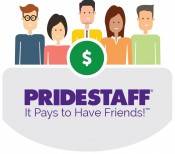As noted by the Work Institute, more than a third of employees quit their jobs within the first year. Forbes cites common reasons – even narrowing that window to six months – including roles not meeting expectations, poor management experiences, and lack of development opportunity.
After the significant investment you make in every new hire, the last thing you want is to become part of these dismal statistics. Be sure to familiarize yourself with best practices for employee onboarding, which can make or break a team member’s introduction to your business and solidify their foundation for long-term success.
Start Off Strong
Onboarding – not to be confused with employee orientation – should last at least a year. While both are necessary and important, onboarding is a more comprehensive process that helps ensure employees effectively assimilate company policies, workflow and culture.
- For optimal results, start before a person’s first day on the job. Set up their work station and such important incidentals as phones, computers and password logins, before they arrive. Have them complete as much paperwork as possible online. And give them some information to engage them, such as a note from their manager, a glossary of company terms, a copy of your employee handbook, and information on practical issues like dress code and where to go when they first enter the building.
- Last but not least, roll out the red carpet. From the receptionist to fellow team members, make sure everyone is ready to welcome your new hire.
Day One Success
There are two main objectives to a new hire’s first day: setting expectations and making them crystal clear, right from go.
- Social interaction is also very important. Give each new hire a tour, introducing them to team members along the way. Be sure you or one of their coworkers takes them to lunch as a further means of establishing rapport.
- Make sure roles are outlined for the entire team. This goes for existing employees as well as newcomers. Otherwise, current staff members may feel resentful or even threatened that someone else could be taking over their responsibilities. Lay the initial groundwork for a friendly, cohesive team.
The First Months
Check in with new employees often during their first days, weeks and months, without micromanaging or inundating them with too much information. As they learn and familiarize themselves with your business, give them some challenging yet easily achievable assignments to build their confidence. Your goal is to ramp them up quickly while providing key on-the-job training in a manageable manner and flow.
- Consider pairing new hires with a mentor. When done correctly, both parties benefit from this potentially ongoing career relationship.
From Onboarding to Retention
At the conclusion of an employee’s first year at your company, it should be time to transition from onboarding to a focus on ongoing job satisfaction and retention. Congrats! You’ve done your job well – and so has your new hire!
To learn more about these and other talent acquisition best practices, contact PrideStaff Modesto today.



